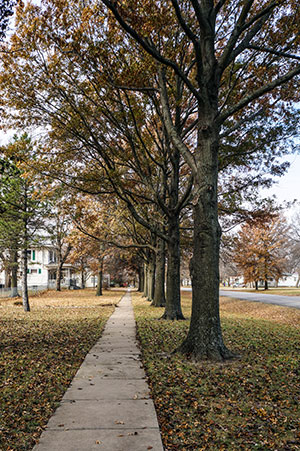The first recorded Arbor Day was recorded in a small Spanish village in 1805 where villagers celebrated tree plantings, feasts and dances for three days. The first recorded Arbor Day in the United States occurred in Nebraska City, NE on April 10, 1872; it was led by J. Sterling Morton—the Morton Salt tycoon. On that one day it was estimated that the citizens of Nebraska planted 2 million trees.
Arbor Day was without exception one of the most anticipated holidays for Nebraskans. It was the equivalent of Super Bowl Sunday in today’s terms. Children were excused from school, shop owners closed their doors, and farmers quit planting their crops to plant trees. It was that important to Nebraska.
In fact today Arbor Day is celebrated world-wide. Sadly, the feelings of Super Bowl Sunday when it comes to Arbor Day have diminished in modern times. Sure every ‘Tree City, USA’ has a tree planting project for Arbor Day, but it’s usually witnessed by a handful of city employees and school kids.
So rather than talk about the lost feelings for Arbor Day, let’s chat about some hidden secrets trees do in our environment.
Big Tree Area
Every time I’m in the ‘Big Tree’ area of our communities, I’m in awe what trees have done to these areas. Besides the obvious of serving as shade, windbreaks, and a place of shelter for wildlife; it’s what trees below ground do that is truly awe inspiring.
We know that tree roots compromise about sixty percent of the mass of the tree. In other words when you look at a tree you’re only seeing about forty percent of the tree, the remainder is below ground. Sure there are a few roots that grow deeper than twelve inches into the soil, but the vast majority of them grow with in the first twelve inches of the soil.
 I want you to think of a spider web of roots just below the soil surface. This spider web of roots can extend five to seven times the height of the tree into the soil. So a fifty foot tree can have a root system that can extend its roots outward from the tree by 350 feet and all within the first twelve inches.
I want you to think of a spider web of roots just below the soil surface. This spider web of roots can extend five to seven times the height of the tree into the soil. So a fifty foot tree can have a root system that can extend its roots outward from the tree by 350 feet and all within the first twelve inches.
So if you live in the ‘Big Tree’ area, just know what you do in your yard will influence the health of trees of your neighbors and vice versa. In my mind’s eye, this takes on a whole new meaning of being neighborly.
Soil Fungi
Trees don’t exist in a vacuum. Sure they need water, oxygen, carbon and sunlight to live and grow. But thru the eons they have developed a mutual relationship with soil fungi called mycorrhizae. These fungi encase the tree’s root hairs and in some cases literally penetrate the root hairs. The fungi develop hyphae that go out into the soil and collect water and minerals for the tree to utilize. In return the tree provides food in the form of glucose to these fungi—a symbiotic relationship.
In a healthy tree ecosystem, this symbiotic relationship provides so much glucose for the fungi to use that there is plenty left over to feed other soil micro-organisms. The result is a soil ecosystem stemming with life. That’s why ‘Big Tree’ area soils are profoundly different and much more productive than our sagebrush prairie soils.
It had everything to do with planting trees.
This article appeared in the April 1st, 2017 edition of the Wyoming Plant Company News sent to subscribers. You can subscribe to the newsletter to get these articles in your inbox by using the form on the sidebar.
